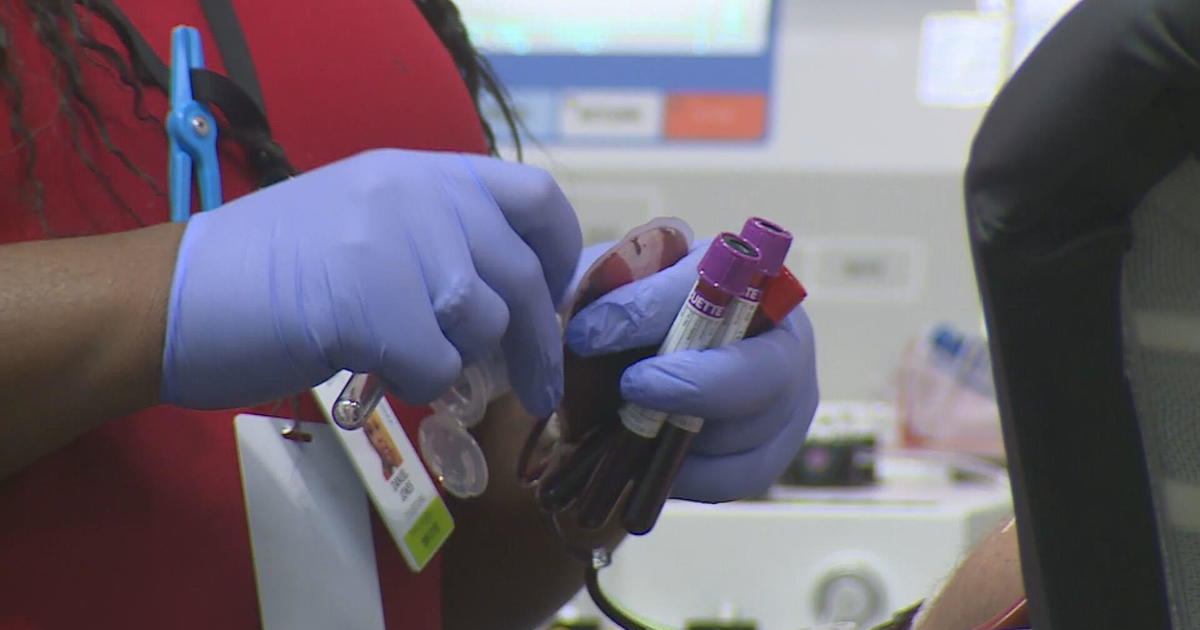El Paso County Passes Denver As Largest In Colorado
DENVER (AP) - Hispanics of any race now account for one-fifth of the state's population, and El Paso County has surpassed Denver as Colorado's most populous county, the Census Bureau said Wednesday.
The census shows there are just more than 1 million Hispanics in Colorado. In 2000, there were about 736,000, comprising about 17 percent of the state's population. The Census figures show El Paso County grew by more than 105,000 people between 2000 and 2010 and now has more than 622,000 residents. The city and county of Denver grew by more than 45,500 and its population stands at just over 600,000.
The new data will be used by lawmakers to redraw districts for Congress and the Legislature. It will also be used to distribute federal funds for various services.
Colorado did not lose or gain a congressional seat in the latest Census count. It gained a congressional seat after the 2000 count.
People who did not identify themselves as white on Census forms increased in all categories, including blacks, Asians, Native Americans and Pacific Islanders. People who identify themselves as non-Hispanic whites of a single race still make up the largest population group at 70 percent, but they're not growing as fast as minorities. The white population is now at about 3.5 million and grew by 9.9 percent since 2000. But the population of Hispanics of any races increased by 41.2 percent since 2000.
Since 2000, Colorado grew by 16.9 percent and now has a population of just more than 5 million. During that time, the U.S. grew by 9.7 percent and the country's population is now 308,745,538, the Census Bureau said in December.
The explosion of the minority populations is no surprise because they tend to be younger than whites, said Colorado demographer Elizabeth Garner.
"So if you have fewer people over people 45 you're going to have a higher concentration in the number of people who give birth so you tend to grow faster," she said.
Colorado's population continues to consolidate along Interstate 25, while the state's eastern fringes continue to decline. Five counties along Colorado's eastern border with Kansas -- Sedgwick, Cheyenne, Kiowa, Prowers and Baca -- each lost 10 percent or more of their populations during the 2000s.
Another pocket of population decline showed up along the state's southern edge in the San Juan mountains. Huerfano and Mineral counties both dropped by more than 10 percent, with Costilla, Conejos and Rio Grande counties dropping between 0.1 and 10 percent each.
In all, 17 Colorado counties had a population decline and most of them were in rural areas in the southeastern part of the state, places that have been able to keep and attract people, Garner said.
In Prowers County, where 49-year-old Sandy Spitz works in Lamar's Pit Stop Sub Shop, the closure of the Neoplan bus factory in 2004 dealt a brutal blow to Lamar's economy. The factory moved to Denver, where Spitz says young folks go to find jobs.
"There are no jobs down here. It's declining. Everybody -- I mean everybody -- is moving to Denver. I'd move to Denver if I could. I don't like it here," Spitz said with a sigh. She's lived in Prowers for 30 years and says the county is noticeably emptier and in need of business.
"We'd take anything, anything but a bar or a liquor store. We have enough of those," she said.
Garner said she expects that El Paso County will stay ahead of Denver because while El Paso County has a larger area to continue to develop.
"Denver is landlocked," Garner said. She said El Paso County's growth is also spurred by its airport, the University of Colorado at Colorado Springs, Colorado College, and its large military population. Fort Carson is in El Paso County south of Colorado Springs. Fort Carson's military population of 27,000 is double what it was in 2003.
Colorado Springs resident Christina Kane, a 42-year-old chef, is among those who recently moved to El Paso County because of the military. Her husband is an Army serviceman stationed at Fort Carson.
"I love it here, I really do. It's just right," Kane said. "With all the military coming in, there's a lot of young people, a lot of moms like me. I really like the Colorado vibe, and I think we want to stay."
Kane and her husband have moved around the country with the military and hope to settle down in El Paso when he retires in a few years.
The growth of El Paso County came as little surprise to Colorado Springs resident Bill Cadman, a Republican state senator who moved to El Paso County about 20 years ago and remembers riding his bike on dirt trails where big-box retailers now stand.
"It's a great place to live," Cadman said of El Paso. "It's a place people want to call home, whether they're young families or members of the military who served at Fort Carson and now they want to come back and build a house and retire there."
Denver is still the largest city in the state at 600,158, followed by Colorado Springs with 416,427. Aurora is still the third largest city at 325,078. Fort Collins saw a big percentage jump in their population since 2000, growing by 21.4 percent to be at nearly144,000 residents.
The population of Lakewood, one of the Colorado's biggest cities, shrunk by 0.8 percent since 2000. Garner said that's an indication of the city's aging population where the children of young families who moved there years ago are now gone.
"You have the same house, people are there, but now instead of being a family of four it's a family of two," she said.
Besides redistricting, the data will also be used to allocate federal funds for roads, and schools. The Census will continue to release more detailed data in the coming months, including information about number of households, family profiles, and race figures showing which countries people are coming to the U.S. from.
- By Ivan Moreno and Kristen Wyatt, AP Writers
(Copyright 2011 by The Associated Press. All Rights Reserved.)



